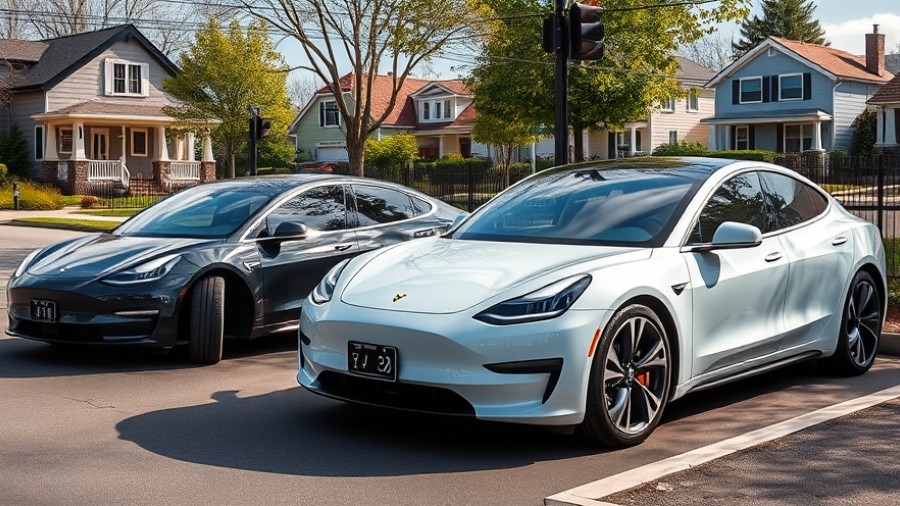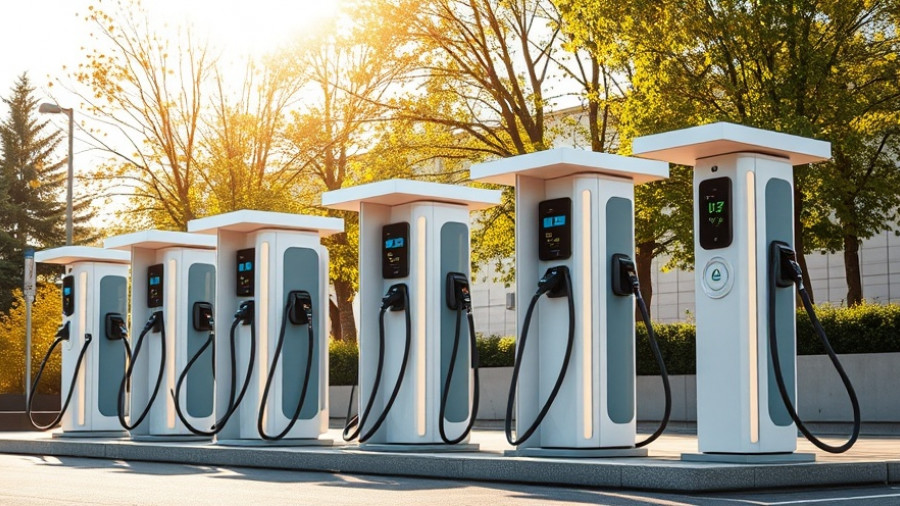
Revolutionizing Urban Mobility: The VX4's Historic Flight
In a groundbreaking achievement for electric aviation, Vertical Aerospace’s VX4 prototype has made history by completing the first piloted airport-to-airport flight by a winged electric vertical takeoff and landing (eVTOL) aircraft. The 17-mile journey from Cotswold Airport to RAF Fairford in the UK marks a significant milestone in the integration of electric aircraft within traditional airport operations.
The Meaning Behind the Flight
This momentous flight not only showcases the VX4's capabilities, reaching speeds of 115 mph and altitudes of 1,800 feet but also positions the aircraft within the broader context of modern aviation advancements. Chief test pilot Simon Davies emphasized the pride and significance of this achievement, particularly at the Royal International Air Tattoo (RIAT), where the VX4 stood out as the only electric aircraft on display among some of the world’s most technologically advanced military planes.
Implications for Military and Commercial Aviation
The successful airport-to-airport flight signals a promising future for electric aircraft in both military and civilian applications. Vertical Aerospace is currently developing a hybrid-electric variant of the VX4, which aims for a much extended range of up to 1,000 miles and can support diverse missions with both crewed and uncrewed options. This integration into military operations is particularly noteworthy, as it highlights how advanced aviation technologies can redefine logistics and tactical transportation.
Funding and Future Developments in Aviation
In a bid to bolster its advancements, Vertical Aerospace recently completed a $60 million public offering. The funds raised are pivotal for ongoing research and development, as well as expanding testing and certification capacities. With ambitions that extend well into mid-2026, these financial maneuvers are essential for maintaining a competitive edge in the rapidly evolving aerospace market.
Broader Environmental Impacts on Aviation
The rise of electric and hybrid-electric aircraft like the VX4 reflects a noticeable shift towards more sustainable aviation practices. With the aviation sector under intense scrutiny to reduce its carbon footprint, innovations like those from Vertical Aerospace are critical not just from a technological standpoint but also for their potential environmental benefits. Optimizing airspace with electric aircraft could lead to significant reductions in greenhouse gas emissions, aligning the industry with global sustainability goals.
Emerging Trends in Transportation Technology
This airport-to-airport flight paves the way for emerging trends in electric mobility, underlining the growing intersection of aviation technology and green energy solutions. Homeowners and businesses interested in sustainable practices must pay attention to such innovations that signify not just advancements in transport, but also the broader implications for green energy dependence and urban mobility solutions.
What Does This Mean for Homeowners and Businesses?
As electric aircraft become part of our transportation ecosystem, there exists vast potential for integrating these technologies within local infrastructures. Homeowners can leverage solar energy and innovations in EV charging solutions to support these new transportation modes. In the broader context, businesses may find new opportunities in logistics and transport sectors as products and services begin to utilize electric and hybrid technologies more effectively.
Call to Action: Stay Ahead of the Curve
For anyone looking to embrace the future of green energy and transportation, keeping abreast of advancements like the VX4 is crucial. These pioneering developments signal a shift that can influence energy strategies and investment decisions in both personal and commercial contexts. As Vertical Aerospace continues to innovate, consider exploring how you can integrate sustainability into your own life or business practices.
 Add Row
Add Row  Add
Add 



Write A Comment